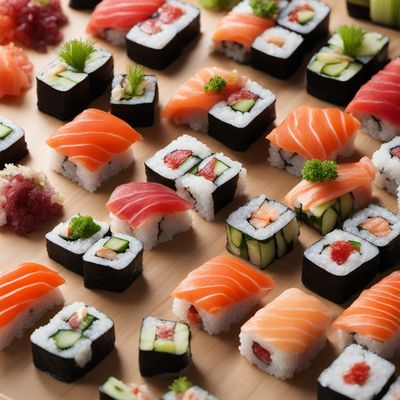
Ingredient
Seafood offal
The Hidden Gems of the Sea: Exploring Seafood Offal
Seafood offal refers to the internal organs and entrails of fish and shellfish, including the liver, roe, heart, stomach, and intestines. It is characterized by its unique taste, which can range from mild and delicate to rich and briny, depending on the type of offal and the species of seafood. The texture of seafood offal can vary as well, from creamy and smooth to firm and chewy. In appearance, it can be vibrant and colorful, such as the bright orange roe of a sea urchin, or more subdued and earthy, like the liver of a fish.
Origins and history
The consumption of seafood offal has a long history, deeply rooted in coastal communities around the world. In many cultures, offal has been valued for its nutritional benefits and resourcefulness, as it makes use of every part of the fish or shellfish. From Asia to Europe to South America, seafood offal has been incorporated into traditional dishes, such as fish liver pâté, grilled fish hearts, and stir-fried fish intestines. Its cultural significance and culinary versatility have made it an integral part of many regional cuisines.
Nutritional information
Seafood offal is a nutritional powerhouse, packed with essential nutrients. It is a rich source of omega-3 fatty acids, which are beneficial for heart health and brain function. Additionally, seafood offal is high in vitamins A, D, and B12, as well as minerals like iron and zinc. Its nutrient density makes it a valuable addition to a balanced diet.
Allergens
Seafood offal may pose a risk for individuals with shellfish allergies, as it is derived from fish and shellfish. It is important to exercise caution and consult with a healthcare professional if you have any known allergies or sensitivities.
How to select
When selecting seafood offal, look for fresh, vibrant colors and firm textures. Avoid offal that appears discolored, slimy, or has a strong fishy odor, as these are signs of spoilage. If purchasing from a fish market or seafood counter, ask the fishmonger for recommendations and guidance on the best-quality offal available.
Storage recommendations
To maintain the freshness and quality of seafood offal, it is best to consume it as soon as possible after purchase. If storing, place it in an airtight container and refrigerate at temperatures below 40°F (4°C). Use within 1-2 days for optimal flavor and texture.
How to produce
Producing seafood offal requires expertise and specialized knowledge. It is typically done during the fish or shellfish processing stage, where the internal organs and entrails are carefully removed and separated. This process is best left to professionals in the seafood industry.
Preparation tips
Seafood offal can be prepared in various ways, depending on the specific type of offal and personal preference. Fish liver can be pan-seared or used to make a creamy pâté. Fish roe can be enjoyed raw as a sushi topping or lightly cooked to enhance its flavor. Fish hearts can be grilled or sautéed for a tender and flavorful treat. Experiment with different cooking techniques and pairings to discover the best way to showcase the unique qualities of seafood offal.
Culinary uses
Seafood offal is commonly used in a variety of dishes and cuisines. Fish liver pâté is a classic preparation, often enjoyed as a spread on bread or crackers. Fish roe, such as caviar, is a luxurious ingredient used in high-end cuisine and sushi. Fish hearts can be grilled and served as a standalone dish or added to salads and stir-fries for added flavor and texture. Seafood offal can also be incorporated into stocks and broths to enhance their depth and complexity.
Availability
Seafood offal is commonly available in regions with a strong fishing industry and coastal communities. It can be found in fish markets, seafood specialty stores, and some supermarkets. Availability may vary depending on the specific type of offal and the local seafood supply.
More ingredients from this category

Sea urchins and other echinoderms
Ocean's Delicacies: Exploring the World of Echinoderms

Jellyfishes and similar
The Ocean's Delicate Gems

Molluscs
Oceanic Delicacies

Processed or preserved seafood
The Ocean's Bounty: Processed or Preserved Seafood

Crustaceans
The Ocean's Delicacy: Crustaceans

Sea-squirts and other tunicates
Oceanic Delicacies
